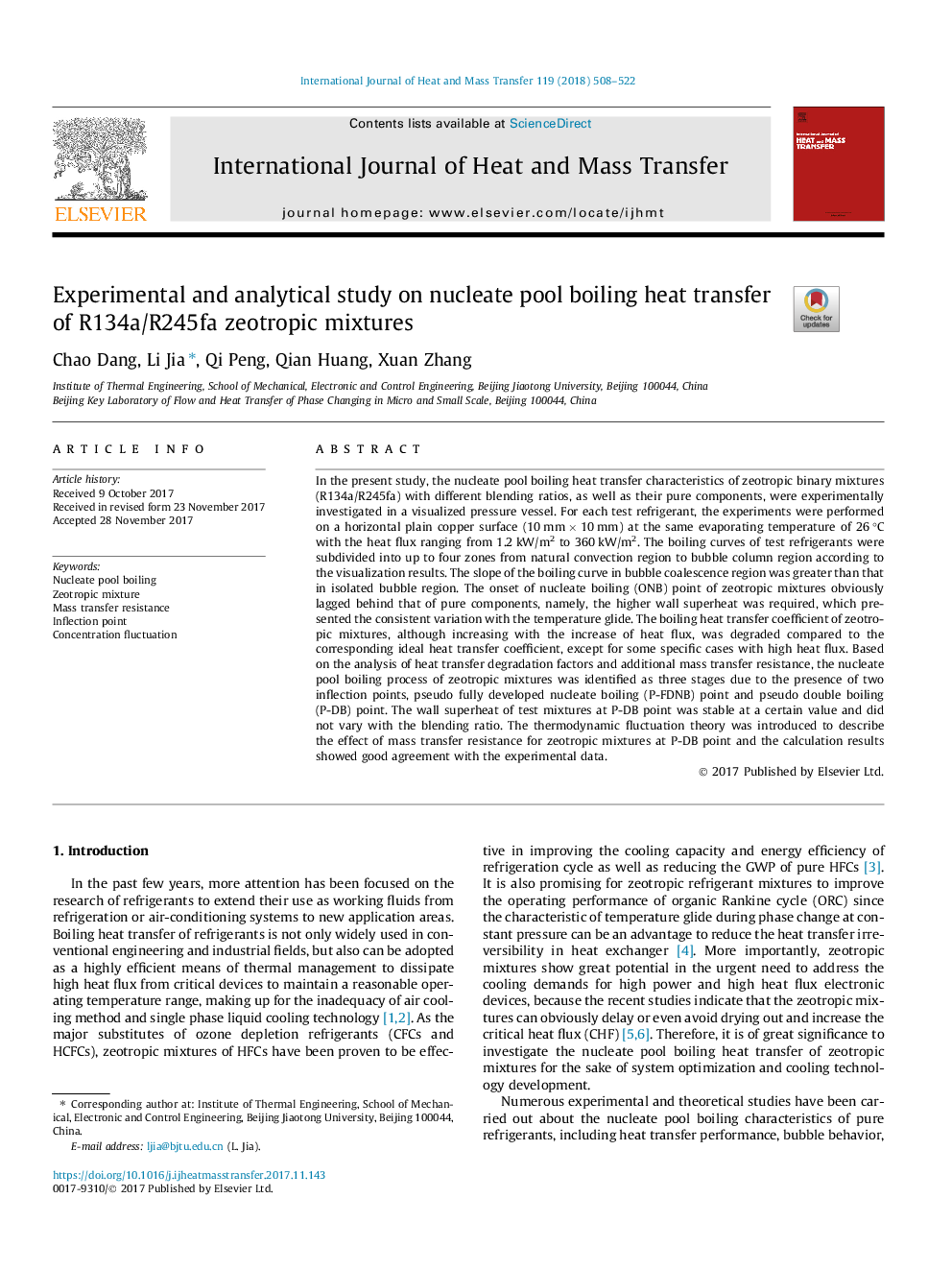| کد مقاله | کد نشریه | سال انتشار | مقاله انگلیسی | نسخه تمام متن |
|---|---|---|---|---|
| 7054687 | 1458021 | 2018 | 15 صفحه PDF | دانلود رایگان |
عنوان انگلیسی مقاله ISI
Experimental and analytical study on nucleate pool boiling heat transfer of R134a/R245fa zeotropic mixtures
دانلود مقاله + سفارش ترجمه
دانلود مقاله ISI انگلیسی
رایگان برای ایرانیان
کلمات کلیدی
موضوعات مرتبط
مهندسی و علوم پایه
مهندسی شیمی
جریان سیال و فرایندهای انتقال
پیش نمایش صفحه اول مقاله

چکیده انگلیسی
In the present study, the nucleate pool boiling heat transfer characteristics of zeotropic binary mixtures (R134a/R245fa) with different blending ratios, as well as their pure components, were experimentally investigated in a visualized pressure vessel. For each test refrigerant, the experiments were performed on a horizontal plain copper surface (10â¯mmâ¯Ãâ¯10â¯mm) at the same evaporating temperature of 26â¯Â°C with the heat flux ranging from 1.2â¯kW/m2 to 360â¯kW/m2. The boiling curves of test refrigerants were subdivided into up to four zones from natural convection region to bubble column region according to the visualization results. The slope of the boiling curve in bubble coalescence region was greater than that in isolated bubble region. The onset of nucleate boiling (ONB) point of zeotropic mixtures obviously lagged behind that of pure components, namely, the higher wall superheat was required, which presented the consistent variation with the temperature glide. The boiling heat transfer coefficient of zeotropic mixtures, although increasing with the increase of heat flux, was degraded compared to the corresponding ideal heat transfer coefficient, except for some specific cases with high heat flux. Based on the analysis of heat transfer degradation factors and additional mass transfer resistance, the nucleate pool boiling process of zeotropic mixtures was identified as three stages due to the presence of two inflection points, pseudo fully developed nucleate boiling (P-FDNB) point and pseudo double boiling (P-DB) point. The wall superheat of test mixtures at P-DB point was stable at a certain value and did not vary with the blending ratio. The thermodynamic fluctuation theory was introduced to describe the effect of mass transfer resistance for zeotropic mixtures at P-DB point and the calculation results showed good agreement with the experimental data.
ناشر
Database: Elsevier - ScienceDirect (ساینس دایرکت)
Journal: International Journal of Heat and Mass Transfer - Volume 119, April 2018, Pages 508-522
Journal: International Journal of Heat and Mass Transfer - Volume 119, April 2018, Pages 508-522
نویسندگان
Chao Dang, Li Jia, Qi Peng, Qian Huang, Xuan Zhang,